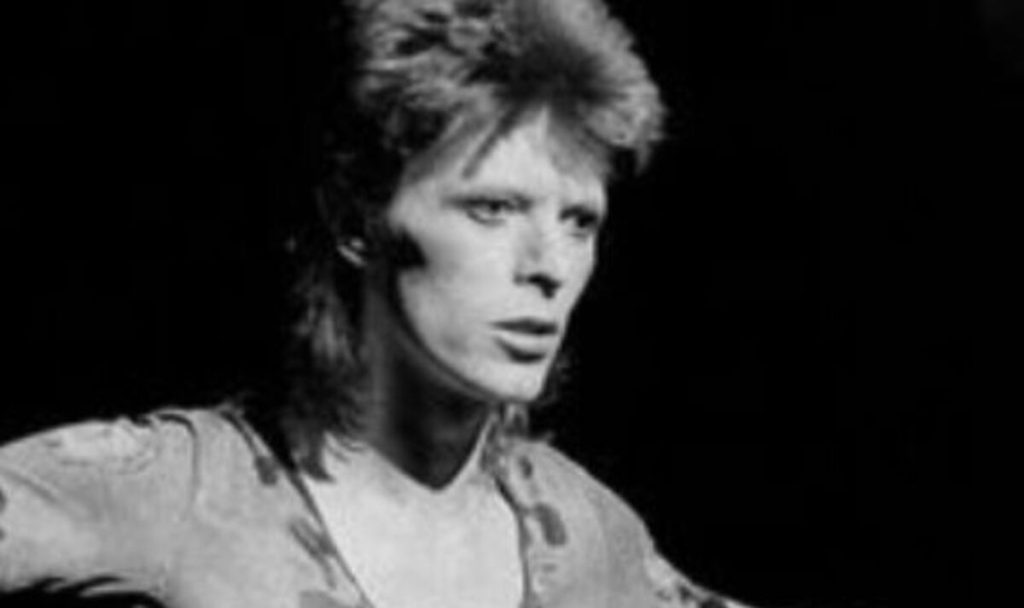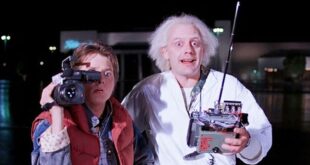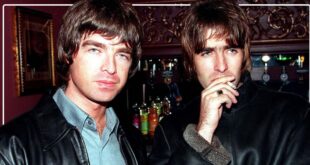
In fact, the 19-year-old had already photographed Bowie twice by then: earlier that month at Manchester’s Free Trade Hall and the previous December at the city’s legendary Hardrock Concert Theatre.
But he instinctively knew he didn’t have the “shot”. So he bought a ticket for the Leeds show, positioning himself in the optimum spot to capture the singer as he raised his arms while performing The Width of a Circle.
Four years later, that image was sold to the V&A Museum for its prestigious permanent collection and Cummins, by now making a living as a freelance rock photographer, was really up and running.
“I went as a fan but it was just an excuse to take pictures,” he recalls of the first Bowie gig. “It wasn’t busy, it wasn’t even sold out. Then they announced the Ziggy tour in the summer of 1973 and I saw him again.
“But I wasn’t in the best position to get what I thought would be an iconic image so I went to Leeds and stood in the spot I thought would work better. I got the shot and it later became my first photograph in a public collection. It taught me never to settle for the first shot… to always look for something better.”
It’s a lesson that clearly stuck. Cummins, now 70, has immortalised thousands of the world’s most famous people on 35mm film – most famously during 25 years working for the weekly New Musical Express (NME), ten of them as its chief photographer.
“I shot so many covers for the NME that, when I compose a picture, I still leave space in the top left hand corner for the masthead without thinking,” he tells me. “A lot of people laugh at that but when they look at my photos, they say, ‘Oh, you weren’t kidding’.”
Many of his images have subsequently become part of the iconography of their famous subjects, including not only David Bowie but legendary Manchester acts like Joy Division, The Stone Roses and Happy Mondays. Others have included Madonna, REM and Ice Cube. Pretty much the only major musical figure he’s never shot is Bob Dylan, but he remains hopeful.
It was a career Cummins was born to follow. Growing up in Manchester in a lower middle-class Express-reading family, his father – a Timpson shoe shop manager and cab driver – and grandfather were keen amateur snappers and they had a dark room at home.
“It sounds grand but it was a cupboard under the stairs,” he smiles. “They bought me a camera when I was five and I took pictures on holiday and stuff. And they taught me how to process and print them. I grew up with the smell of chemicals.”
Having graduated with a degree in photography from Salford College, and inspired by the likes of German portrait photographer August Sander and US and British photojournalists Diane Arbus and Bill Brandt, he set out to document the Manchester music scene – selling his shots to the NME alongside words from local scribe Paul Morley.
“There was a nucleus of about 50 people who used to go to loads of gigs and you’d see them all the time,” he recalls. “I went to school with [Factory Records founder and Granada TV presenter] Tony Wilson and I used to go to football with [Joy Division manager] Rob Gretton – we all knew each other.
“So when people were forming bands, I was there to photograph them and Paul was there to write them up. We used to bombard the NME with stuff.
“If nothing was happening, we’d make it up. The BBC’s Whistle Test [music programme] would be filmed in Manchester quite often, because the studios in London were always overloaded, so we’d blag our way in to photograph and interview people like Patti Smith.”
Today, although his portfolio also includes actors and sports stars (in 2002/2003, the die-hard Manchester City fan was embedded with the club for the final season at its Maine Road ground), Cummins remains best known as a music photographer.
While Bowie kick-started his career, the band he is most closely associated with remains Joy Division. Known for their dark lyrics and the tragic death of frontman Ian Curtis by his own hand aged just 23, Cummins helped mould their image.
Of their first gig on May 29, 1977, when they were still called Warsaw, he recalls: “We had no idea we were watching a band that would touch our lives for more than 40 years.”
Two years later on January 6, 1979, his shots of the still relatively unknown band, now called Joy Division, in a snowy Manchester would come to define them – especially a shot of the four members on a pedestrian bridge over the Princess Parkway in Hulme.
“I never thought the bridge picture would be used because you couldn’t really see the band,” he admits. “Normally people wanted a more confrontational picture of a band but they weren’t like that. I wanted people to see that picture and know what their sound was like – I liked the space and the bleakness of it. It’s very Joy Division.”
Which raises an interesting question, a sort of chicken and egg conundrum: did Cummins simply reflect the band, or have his shots created the mystique in which they are held?
After all, he describes them as “ordinary lads like me”, not the gloomy urban poets they are revered as by generations of fans.
“Ian and the others were learning how to pose as a band. I was learning how to shoot bands. We each had our own agenda,” he has previously recalled. “They weren’t really the serious young men of Ian’s dark lyrics.”
Today he admits: “People’s perception of them is formed by the photographs. I didn’t want a picture of Ian p***ing in an ashtray. I wanted him looking serious.
“You’ve got to tell a story with a photograph for a music paper. It’s not just a case of getting a picture at the train station and then going home. In those days when you couldn’t just press a button and listen to the music, I always felt it was my responsibility to tell the reader what that band was like and how important they were.”
So if he’d shot them differently, they might have been perceived by posterity in an entirely different way then? Even bass player Peter Hook once told Cummins he thought of Joy Division as “a black and white band” thanks to the photographer’s shots.
Indeed, Cummins only shot a total of six frames of them in colour in three years – perhaps not surprisingly as he had to pay for his own film and processing at £10 a roll (he always hoped the NME would use more than one picture so he could turn a profit, the rate being £6.50 a shot).
“I was very parsimonious with film andseldom wasted a shot,” he recalls. “A typical session would rarely run to more than a single roll and even then I’d try and save a few frames to shoot something foranother client.”
Ironically, having photographed pretty much everything he could in Manchester, Cummins moved to London shortly before the so-called Madchester scene exploded in the early Nineties.
“I got to the point where, like everyone who wants a serious career in the media, I needed to move to London. So in 1987 I did it and started shooting full time for the NME.”
Soon afterwards, he was back nearly every week documenting rising bands like The Stone Roses, Happy Mondays and, later, during the Britpop years, Oasis – photographing Liam and Noel Gallagher in one especially memorable shoot in Man City’s sky-blue kit with then sponsor Brother emblazoned on the front. “I wanted that to go on the cover and my then editor, Steve Sutherland, said he didn’t want them to be associated with losers. He’s a Southampton fan!”
Another time, he was sitting in the lobby of a hotel in Newport waiting for the band when Liam sauntered down. He recalls: “I looked up and saw the etching on the glass above him, the ‘Oasis Bar’. I said, ‘Don’t move, just stand still’, grabbed my camera and got the shot.”
The striking image of the singer made the band’s first NME cover on June 4, 1994. “In the end, I did about 250 covers and I was away all the time. But I was doing stuff that I felt would define the period and also would define certain bands,” he says.
When the NME sold its final edition, before going free then eventually digital-only, a readers’ poll voted Cummins’ shot of Manic Street Preachers guitarist and songwriter Richey Edwards, who later disappeared, topless and covered in Marilyn Monroe stamps, as its best ever cover.
“Because the Manics were such avid readers when they were growing up, they knew their first NME cover had to be important,” the photographer recalls.
“So they went out the night before to a club and asked girls to give them love bites, so they’d look really trashy for the photos.”
Cummins finally left the NME when it made a grab for his copyright. Today he owns the rights to all his pictures, a form of “pension” he says, and his new book, David Bowie: Mixing Memory and Desire, containing his earliest shots, is the latest in a line of beautifully-produced coffee table tomes.
Still taking pictures, Cummins mixed his love of Man City and music earlier this year with a lovely shot of the former Maine Road centre circle, now a roundabout on a housing estate, for the cover of Noel Gallagher’s latest album, Council Skies.
“People don’t give Noel credit for how clever he is. It was his idea to mark the 20th anniversary of City leaving Maine Road.”
While he misses the weekly music press, he adds: “Maybe it was a good thing the NME stopped when it did because it was putting Simon Cowell on the cover by then.”
But it’s not only the decline of the music press, once with several competing papers and magazines a week, that has changed. “I always felt it was our job to build the iconography of a band. And with each shoot, we’d take them up a notch,” he adds.
“These days bands don’t get it. People are so used to taking pictures on the fly with their smartphones they don’t understand the need for anything more.
“But I’m more into photography as an art form. I always saw myself as a portrait photographer; you’ve got to almost make the lens disappear. The subject has got to look through the camera at the photographer – that’s when it works, when you break the barrier of the camera down.”
- David Bowie: Mixing Memory & Desire by Kevin Cummins (Octopus, £35) is out now. For free UK P&P visit expressbookshop.com or call Express Bookshop on 020 3176 3832

 Latest Breaking News Online News Portal
Latest Breaking News Online News Portal




